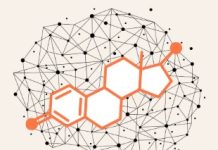The World Health Organization (WHO) defines child maltreatment as, “… the abuse and neglect that occurs to children under 18 years of age. It includes all types of physical and/or emotional ill-treatment, sexual abuse, neglect, negligence and commercial or other exploitation, which results in actual or potential harm to the child’s health, survival, development or dignity in the context of a relationship of responsibility, trust or power.”
The extent of child abuse and neglect in the United States and beyond portends a world of greater violence and dysfunction for future generations. In the United States for the year 2014, children in their first year of life had the highest rate of victimization, 24.4 per 1,000 children of the same age.1 The national rate of child fatalities was 2.13 deaths per 100,000 children.1 Child physical abuse (CPA) during infancy is the leading cause of violent death for children under the age of one year, with mortality rates between 13% and 30%2,3 and approximately 68% of survivors demonstrating impairments across the lifespan.3
A common form of CPA during the child’s first year involves abusive head trauma (AHT) and is diagnosed by injuries sustained, including subdural hematoma, retinal hemorrhage, and cerebral edema. Injuries associated with infant shaking result in significant morbidity including permanent brain damage and cognitive impairment, epilepsy, blindness, cerebral palsy, and permanent disability, requiring life-long medical intervention.2-5 Tragically, mild injury from CPA can cause fussiness and irritability in the infant, putting them at risk for additional and more severe CPA. In fact, during examination of severe AHT associated with CPA, examiners often find evidence of previous injury. Preterm infants are often at higher risk for CPA than full-term infants and mortality rates in African-American children are between 5 – 10 times higher than that of White children.6 The most common cause of shaking an infant, leading to AHT, is crying. Almost 80% of child deaths resulting from child abuse in young children are caused by at least one parent.1
Although international data on the issue is problematic due to a lack of consistency in identification and reporting, child maltreatment is a global public health problem with the potential for escalation as abused children become abusing parents.7 Existing programs designed to reduce infant shaking have not been effective in reducing risk for shaking or reducing rates of AHT.8,9 Existing parent interventions may be less effective because they do not target some of the largest potentially modifiable risk factors: negative attributions for infant crying (the child is punishing me) and parent emotional reactivity (e.g., anger). These risk factors likely mediate the relationship between infant crying and parental shaking.
The University of Illinois at Chicago Children’s Hospital is engaging in a pilot project to examine a public health approach to providing inoculation against child abuse. Parents of children in the Neonatal Intensive Care Unit (NICU) are being offered prevention programming that extends evidence-based cognitive-behavioral therapy methods to promote emotion regulation and challenge negative attributions for infant crying, and teach infant soothing techniques to promote parental efficacy, empathetic parental-child interactions, and infant soothing.4,10 Through these efforts, UIC is hoping to inoculate parents against the use of violence during periods of infant crying and reduce the associated individual and societal sequelae over the life course.
References
1. Administration on Children, Youth and Families. Child maltreatment 2014. U.S. Department of Health & Human Services Children’s Bureau; 2016.
2. American Academy of Pediatrics Committee on Child Abuse and Neglect. Shaken baby syndrome: Rotational cranial injuries – Technical Report. Pediatrics. 2001;108(1):5.
3. Barlow KM, Thomson E, Johnson D, Minns RA. Late neurologic and cognitive sequelae of inflicted traumatic brain injury in infancy. Pediatrics. Aug 2005;116(2):e174-185.
4. Centers for Disease Control and Prevention. Nonfatal maltreatment of infants-United States, October 2005-September 2006. Vol 57. Atlanta, GA: Centers for Disease Control and Prevention; 2008.
5. Chiesa A, Duhaime AC. Abusive head trauma. Pediatric clinics of North America. Apr 2009;56(2):317-331.
6. Falcone RA, Jr., Brown RL, Garcia VF. Disparities in child abuse mortality are not explained by injury severity. Journal of pediatric surgery. Jun 2007;42(6):1031-1036; discussion 1036-1037.
7. Kaufman J, Zigler E. Do abused children become abusive parents? American Journal of Orthopsychiatry. 1987;57(2):186-192.
8. Barr RG, Rivara FP, Barr M, et al. Effectiveness of educational materials designed to change knowledge and behaviors regarding crying and shaken-baby syndrome in mothers of newborns: a randomized, controlled trial. Pediatrics. Mar 2009;123(3):972-980.
9. Keenan HT, Runyan DK, Marshall SW, Nocera MA, Merten DF, Sinal SH. A population-based study of inflicted traumatic brain injury in young children. JAMA. Aug 6 2003;290(5):621-626.
10. Karp H. The Happiest Baby on the Block: The New Way to Calm Crying and Help Your Baby Sleep Longer. Michael Joseph; 2002.

Authors:
Heather J. Risser, Ph.D.; Assistant Professor, Director of Mental Health Promotion, Department of Pediatrics, College of Medicine, University of Illinois at Chicago (UIC)
Zahra Issa, BA, Research Specialist, UIC
Kate Lapin, MS, Program Services Specialist, UIC
Benjamin Van Voorhees, MD, MPH
Associate Professor of Pediatrics
Interim Head, Department of Pediatrics
Physician-in-Chief, Children’s Hospital University of Illinois
Project Director for CHECK Grant
Department of Pediatrics, University of Illinois at Chicago
Children’s Hospital, University of Illinois Hospital & Health Sciences System
840 South Wood Street (MC 856)
Chicago, IL 60612-7324
For more information, visit:
http://chicago.medicine.uic.edu/departmentsprograms/departments/uicpediatrics








